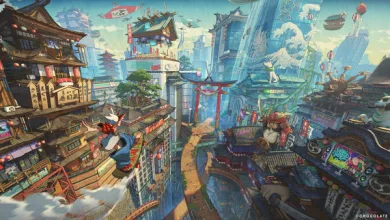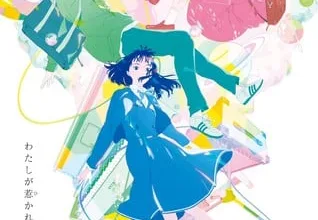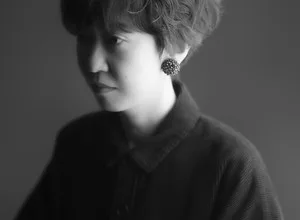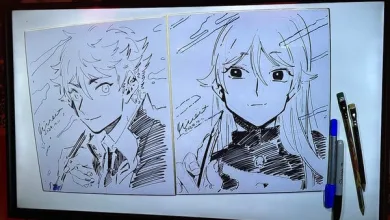Interview: Director Kumiko Habara & Scenario Writer Kenta Ihara on Bringing History to Life in Blue Miburo
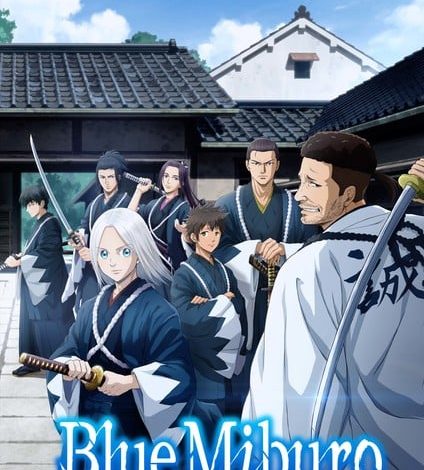
Blue Miburo, a historical fiction manga centered around the legendary group of swordsmen known as the “Shinsengumi,” is getting an anime adaptation this fall. Recently, I was able to sit down with director Kumiko Habara and scenario writer Kenta Ihara to talk not only about the upcoming anime but their experience in the industry and their philosophies on adapting manga to anime as well.
©Tsuyoshi Yasuda, KODANSHA/’Blue Miburo’ Production Committee
Habara is a multi-decade veteran of the anime industry, though the path of her career is different from most. “I’d been working in anime for just under 10 years, maybe around 9. I worked as an animator, key animator, and animation director,” Habara began. “Then I retired to give birth to and raise my child and became a full-time housewife.” But that wasn’t the end for her professionally. Years passed, but her talent was still desired. “The Japanese anime industry is always short on manpower, so I would often get calls from old acquaintances—and when I said I might like to come back and work a bit, I started getting more and more work offers.”
In recent years, Habara’s been regularly working as an anime director—mainly for MAHO FILM. This is how she got involved in Blue Miburo, the newest anime to come out of the studio. And for this Shinsengumi-focused anime, she knew exactly who she wanted to work with: “I thought Kenta Ihara would be good [for the series composition role], and MAHO FILM was also thinking the same thing. Since we came to the same conclusion so quickly, we decided to ask him.”
Kenta Ihara wasn’t originally interested in writing for anime. Rather, he started his career in traditional filmmaking. “I originally did live-action. I did that for about three years, and then I got into anime through a connection with an acquaintance,” Ihara told me. “I was involved in series composition for the first time in about 2017, so I’ve been doing it since then.” This has led to a bit of impostor syndrome: “I studied [live-action filmmaking] in school, so I entered the industry without knowing anything about anime—yet, I’ve been getting it done somehow… I always feel a bit guilty about that.”
What made Ihara a perfect choice for adapting Blue Miburo is the simple fact that this is not his first rodeo when it comes to screenwriting about the Shinsengumi. “I had been involved in an anime that was focused on the Shinsengumi before, so I knew a certain amount about them—and that was what made me want to try something like this anime.”
However, while the Shinsengumi connection is what grabbed Ihara’s initial interest, it is the themes within that kept his attention. “I think this is a story about Nio’s pursuit of his own sense of justice—and that’s why I participated in making this anime.” Ihara continued, “Rather than saying ‘this is the right answer,’ the characters are also groping around for their own sense of justice. I think it’s a story in which the viewers—the audience—also search for their own sense of justice while getting to know each character.”
Blue Miburo is set in Kyoto during the Bakumatsu period, the years of civil unrest that led up to Japan’s final civil war and the modernization of the country. By definition, this makes the anime a piece of historical fiction—especially with its focus on the very real Shinsengumi. “I think it’s a work that successfully mixes fiction and non-fiction—and the author of the original manga is very knowledgeable about the truth of what actually happened,” Habara said, speaking on the historical accuracy of the story. “You can tell that he researched it thoroughly when he wrote it, and I wanted to be faithful to that.”
As a director, Habara is most concerned with getting the look of the time correct. “After Blue Miburo was greenlit, I went to Kyoto a few times—visited various real locations and confirmed for myself what kinds of places they were. I want to convey [the locations] as realistically as possible—I want to do the non-fiction parts as accurately as possible.” Of course, modern Kyoto and the Kyoto of the mid-1800s are far from identical. Habara showed me one way that she and the animation team worked to bridge the time gap. “I brought this with me today, an old map made in the same year that Blue Miburo is set in. […] So, while looking at this, I’m able to research various things, like, ‘If I lived in this area, there was a river here at the time.’” Knowing the past layout of the city helped the team bring the anime to life.
For Ihara, it was the dialogue that proved to be the challenge—after all, the Japanese language has changed a lot in the past 150 years. “When it comes to the dialogue, I don’t know the exact specifics for the time period—the real way that common people spoke,” Ihara explained. “Moreover, I think it’d be a failure if the viewers end up thinking, ‘What are the characters saying?’ So, when it comes to conveying feelings, I thought that the dialogue should be modern to a certain extent—as opposed to the language of the time.” Of course, that didn’t stop Ihara from worrying about it. “There were quite a few times when I wondered, is this word okay? Is it not okay? I don’t want things to ring false, but I think there are parts that need to be easy to understand in the present world.”
Despite the show’s cast of real historical figures, the main character of the series is fictional. Nio is a young orphan taken in by the Shinsengumi after one of their clandestine missions. Both Habara and Ihara had thoughts as to why he was the protagonist instead of one of the famous Shinsengumi members—whose names are still well-known in Japanese pop-culture to this day. “I think that Nio’s a character who has feelings that are relatively similar to a modern person’s—even though he knows nothing about them—so it’s easy for viewers to empathize with him. Moreover, seeing the Shinsengumi through Nio’s eyes is something new; the Shinsengumi have been seen in many films and shows—and there are also many manga and novels about them.”
Ihara agreed. “I think that the fact that the anime doesn’t simply follow famous Shinsengumi characters is a novel perspective that comes from the original manga. As Habara said earlier, the image of the Shinsengumi is somewhat solidified in the public consciousness, so I think that a character who can drive them forward—who isn’t biased by this—was needed.”
But more than just being a useful audience proxy, both feel that Nio is a solid character in his own right. “He’s still a child, so he’s not that strong, but he stands up to strong people without flinching—he’s unwavering. There’s something about him that’s solid and strong. I think that’s what makes him so attractive and amazing,” Ihara explained.
“I think Nio’s great because he’s such a hard worker—even when it comes to the things he’s not good at,” Habara added. “For example, there’s a part where he practices swinging a wooden sword over and over again—and people around him think he has no talent at all. However, Nio says, ‘If you’re not up to snuff, then give it your all and sweat.’ I think that’s very Nio-like, and we should learn from that.” In fact, that very quote became a personal mantra for Habara as she worked on the series.
Habara’s biggest challenges came from the nature of the anime itself. Up until this point, she had been directing fantasy anime—not ones filled with history and realistic violence. “It was a real challenge for me, and I wasn’t knowledgeable about history, so I had to start from scratch,” Habara explained. “I was also aware that I wasn’t very good at action scenes, so I really thought that it was probably impossible—I felt like I was about to give up many times.” Yet, instead of doing so, she did tons of first-hand and second hand-research—and even attended sword fighting demos showcasing the styles of the various Shinsengumi members. “It overlaps with that Nio quote I mentioned earlier,” Habara continued. “In the end, I’m doing my job in the spirit of trying to work hard on the areas where I’m lacking.”
To close things out, we discussed the nature of adaptation—their personal philosophies when it comes to turning a manga into an anime in general and Blue Miburo in specific. As a screenwriter, Ihara’s focus is on the change in the medium and how that affects the storytelling. “In the case of Blue Miburo, I had talked with Ms. Habara at the beginning about wanting to ‘take it slowly.’ So rather than making an abridged version—cutting out weird things or making it with a strangely fast tempo—I wanted to make it while keeping as many of the important parts of the original as possible.” Of course, that doesn’t mean that there were no cuts made—or additions, for that matter. “There are places where there is redundant information—or where you can understand what’s going on from the visuals without anything being said,” Ihara continued. “This time, we didn’t add a ton of original stuff but there are some places where we felt like we should add in a little more—like in the narration. So I think it’s a matter of looking at the bigger picture and making decisions about what to add and where.”
As a general rule, Habara tries to walk a bit of a tightrope in her anime: “I try not to be too influenced by the manga before I start making my adaptations. I make anime as anime.” That said, it’s not like she ignores what made a given work popular. “I do try to recreate as many impressive scenes as possible—or scenes that I thought were great when I was reading the manga. But I often think of other [non-impactful] scenes as something separate.” Yet, Blue Miburo has proven to be a bit of an exception to the rule. “It has become a bit of a personal hobby for me. I’ve become a really big fan of the original manga, so I have a strong desire to recreate it in a way that conveys my love of it to everyone,” she concluded.
Blue Miburo is being animated by MAHO FILM and is scheduled to air in fall 2024. Anime Expo will host the world premiere of Blue Miburo on July 4 at 10:30 AM PDT in room 403AB.
Source link
#Interview #Director #Kumiko #Habara #Scenario #Writer #Kenta #Ihara #Bringing #History #Life #Blue #Miburo

